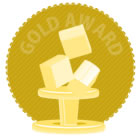Puzzle League DS (Nintendo DS) Review
By Adam Riley  03.07.2007
03.07.2007

The Nintendo DS has been lucky to receive many different already classic puzzle titles since launching back in March, 2005, but now a different class of game is here: Puzzle League, what many may know as Tetris Attack from the SNES. Since originating from Japan as Panel de Pon on the SNES, the game has been released across numerous formats under various different guises. Yoshi adorned the Super Nintendo edition in the West, and then Pokémon were added for the Game Boy Colour and N64 versions, with it being stripped down completely when being joined by Dr. Mario in a puzzle-duo on the GBA. But now it is back, stripped once more, yet with heaps more added to it for the DS. Could this be the definitive release?
Well, looking at the game you can straight away see that Nintendo has been keen for developer Intelligent Systems (of Paper Mario, Fire Emblem and Advance Wars fame) to slide it into the Touch! Generations style in terms of appearance and introductory theme music. But rather than being like its GBA predecessor, you soon realise that a lot of effort has gone into making this the ultimate package, with a slick, easy-to-navigate front-end, various different backgrounds to choose from (the default being different in the European one to the Japanese edition, it must be noted...localisation rearing its head!) and tunes that are perfectly appropriate for the styles chosen. It really looks the part and is extremely polished all around...you hardly miss the Yoshi or Pokémon themes!

When originally released as Tetris Attack it was clear Nintendo was simply desperate to push a game that really had nothing to do with Tetris. In Japan the game goes under the name of 'Panel de Pon' and includes lots of pink fairies and so on. Obviously, though, the thought is that the 'girly' theme would not suit us Westerners. But it is the core gameplay that wins through every time. For those not in the know, the basic idea is that blocks move from the bottom of the screen upwards and you must match up between three and five of the same colour on either the horizontal and vertical plane. The thing is, though, you can only move blocks horizontally by switching two adjacent tiles at a time.
In the past this was done by moving a cursor around the screen with the d-pad and clicking the action button to switch two tiles' positions. Now, though, a much more user-friendly touch-screen alternative has been included. This means you can now drag tiles across to match things up with far greater speed and, thankfully, the accuracy of the touch-screen implementation is far improved over that of Picross DS. And you can definitely pull off some fantastic combination techniques once adjusted to the new control set-up. There is a button on the bottom right of the touch-screen (the DS being held in the now very commonly used 'book' orientation) that you can press to manually push up the blocks. Whilst this may seem suicidal, since if the screen fills up it is 'Game Over', once there are more colours on-screen you can go crazy with clearing tiles and then, when the automatic rise temporarily ceases as reward for clearing blocks, moving others around in such a position that blocks dropping down from above actually land and get cleared straight away. A keen eye and quick reactions can lead to devastating combinations that result in large 'Garbage' blocks falling onto your opponent's screen. These can only be broken down line by line when a line of colours touching the garbage block is cleared successfully.

In this edition there are special items to be used as well, such as ones that remove all garbage from your screen and dump it back on the other player; electric shocks that prevent a whole line of blocks from being moved in any way; an effect that constantly changes all coloured blocks to different colours, making it very hard to match anything up; and the wonderful combination linker that makes your cursor flash for a short while and ANY colours matched up become part of a large combination move! But these are only of use during the various vs. modes against either friends or computer opponents. There are lots of other modes on offer to extend the game's fun.
First up is the traditional 'Endless', where you just keep clearing as many blocks as you can until the speed at which the blocks rise becomes too much to cope with. In addition there is a 'Daily' option, which tracks your progress on three small challenges (kind of like Brain Training, but pointless, if you ask me). In 'Puzzle' you are faced with a pre-set arrangement of blocks and must either clear them all in a set number of moves, or cause chain reactions in a particular way. 'Garbage Challenge' constantly throws garbage blocks at you, forcing you to clear as much as you can in the cleverest way to clear them all and 'Clear' offers up a line far down the blocks that you must 'clear' up to in order to progress. The amount of variety on offer really does prevent boredom from creeping in.

If you are looking for something as addictive as Tetris, the look no further as other puzzle games may well give you that ridiculous craving, but that thirst for 'just one more go' tends to dry up over time. Well, Puzzle League proves that the formula not only stands up to the test of time (just think that the SNES original came out well over a decade ago now!), but is more addictive than ever before, with a plentiful supply of modes on offer, four-player wireless multiplayer from just one DS card and the fantastic addition of online matches (with voice chat when using Friends Codes) that test your skills so much that sheer pride will keep you coming back, if nothing else. The ultimate version indeed...

Cubed3 Rating
Exceptional - Gold Award

The ultimate puzzle game for the Nintendo DS, taking an old formula and tinkering with it until sheer perfection is achieved. Puzzle League manages to lift itself above the already crowded genre on DS and claim the crown.
Comments
Comments are currently disabled

 Sign In
Sign In Game Details
Game Details
 Out now
Out now  Out now
Out now  Out now
Out now  Out now
Out now  Subscribe to this topic
Subscribe to this topic Features
Features






 Top
Top

